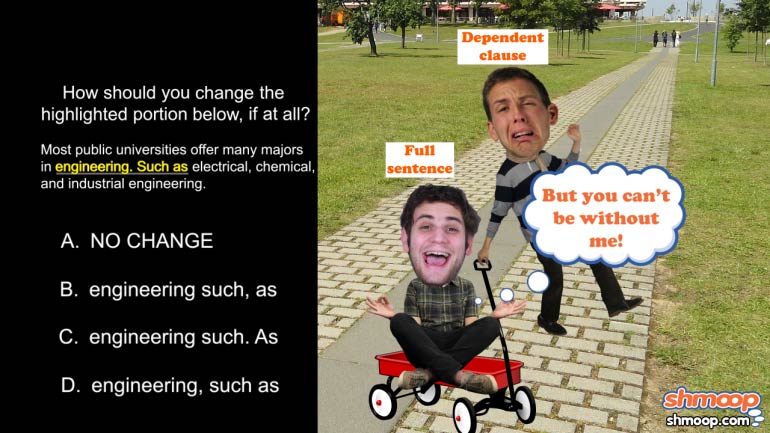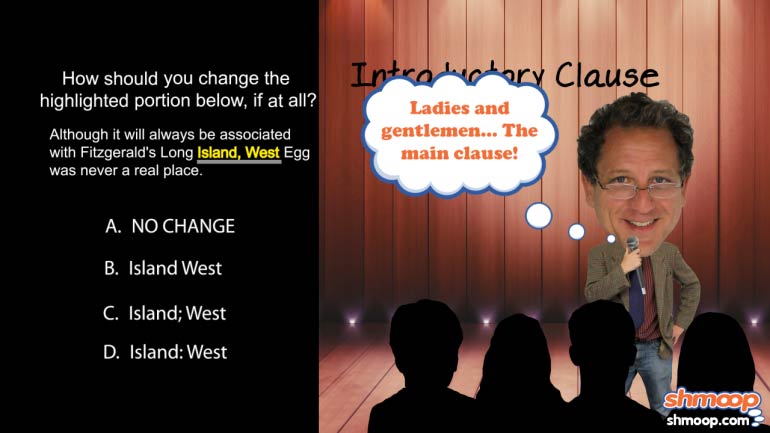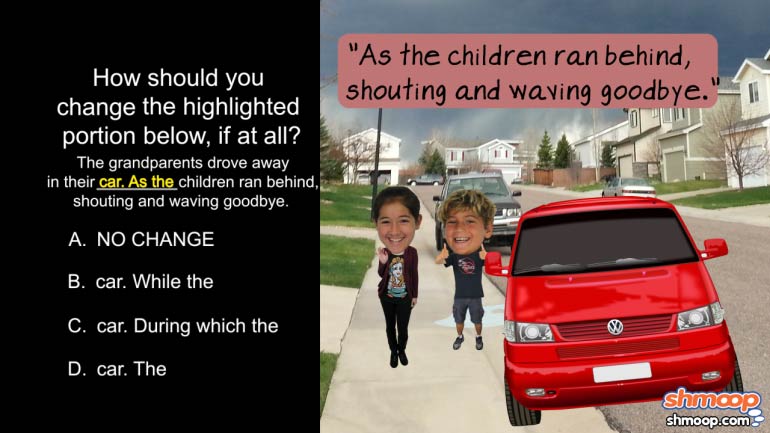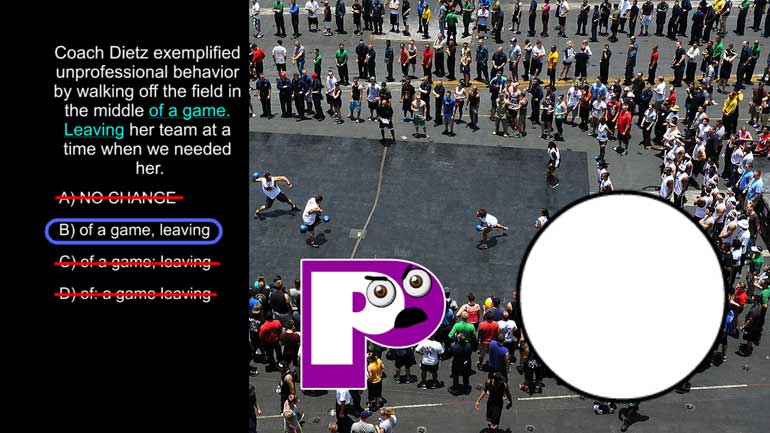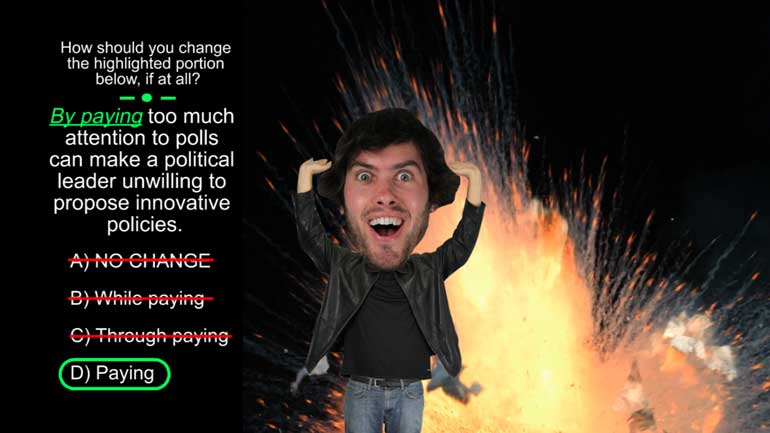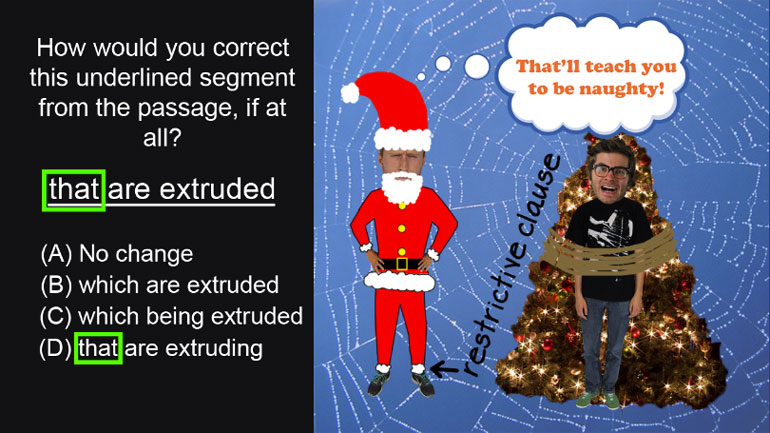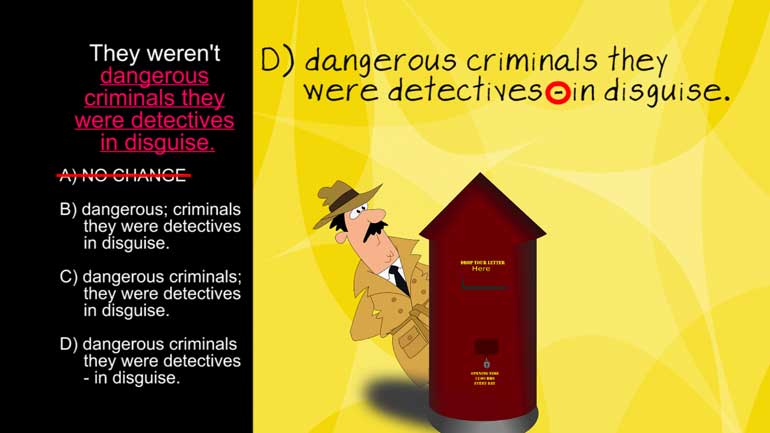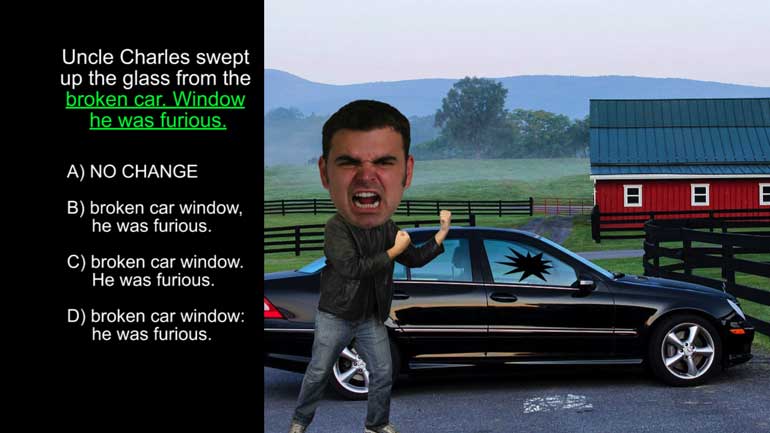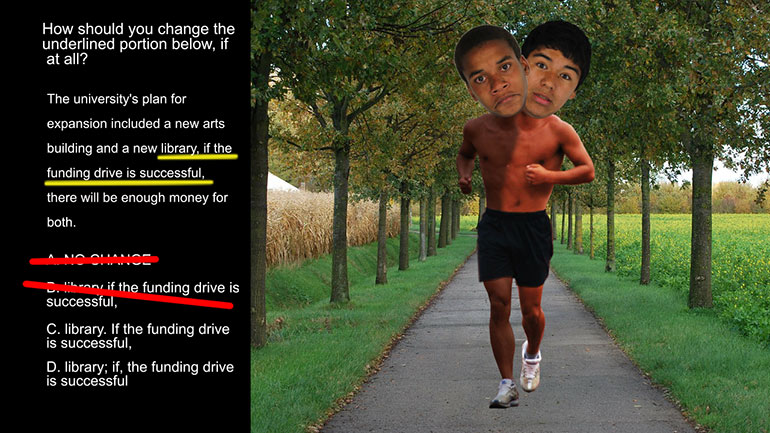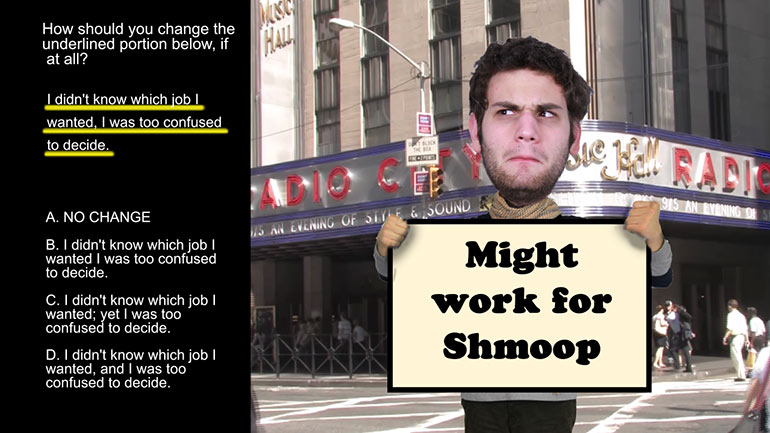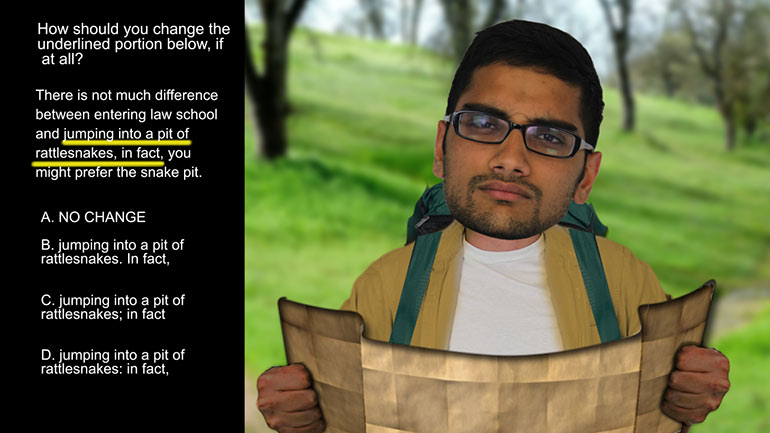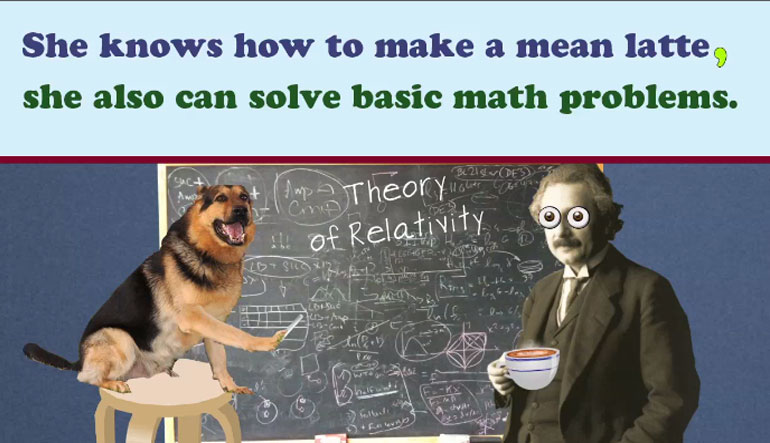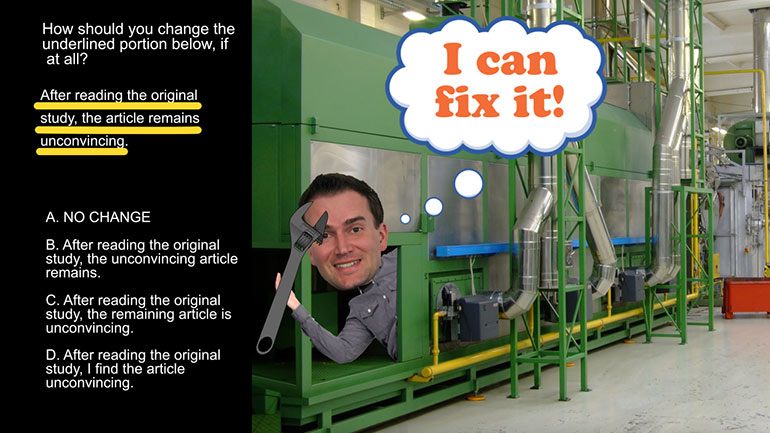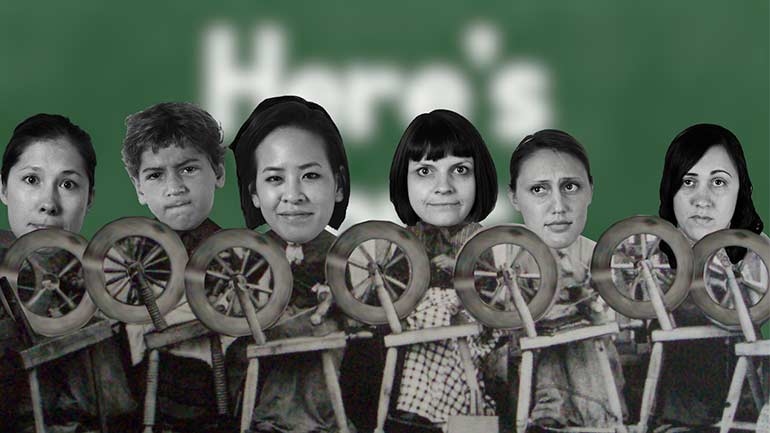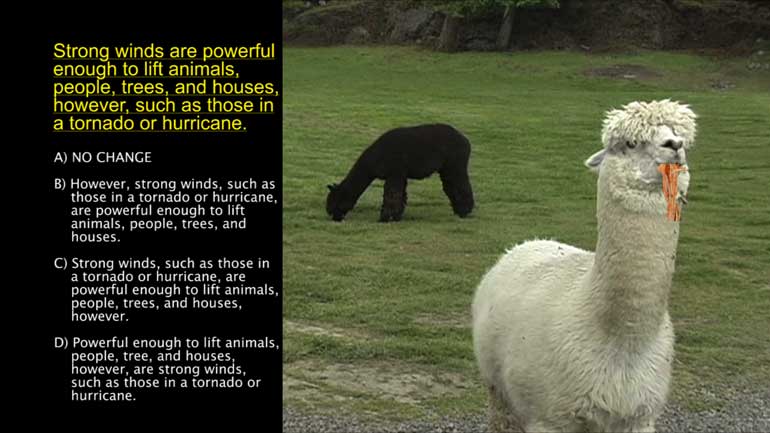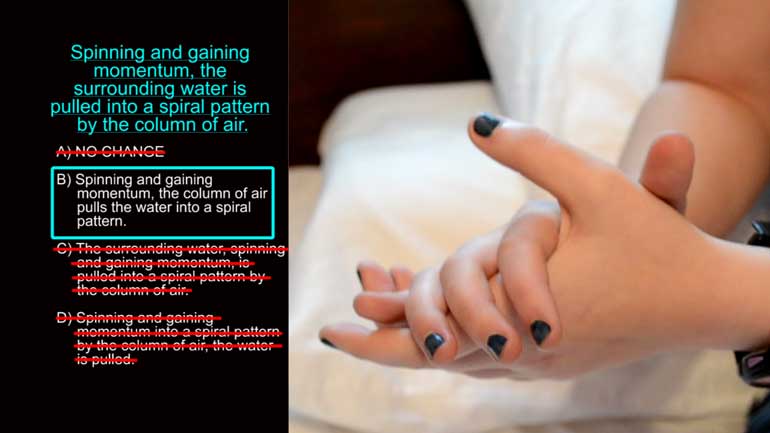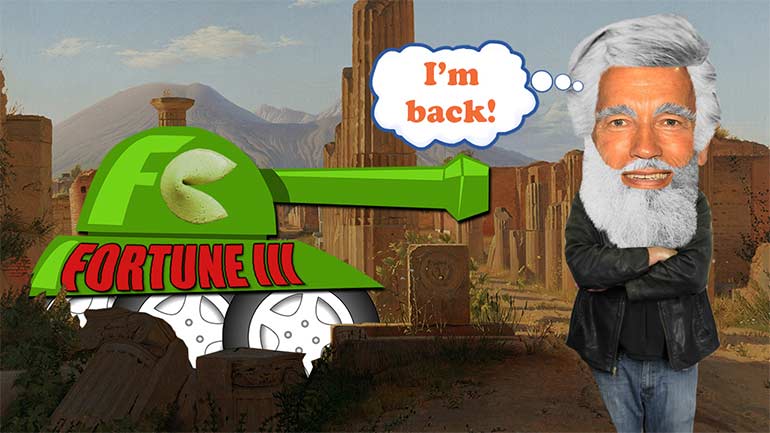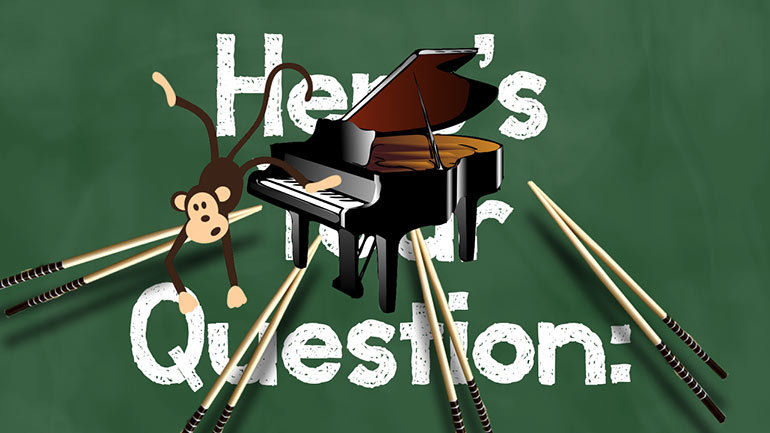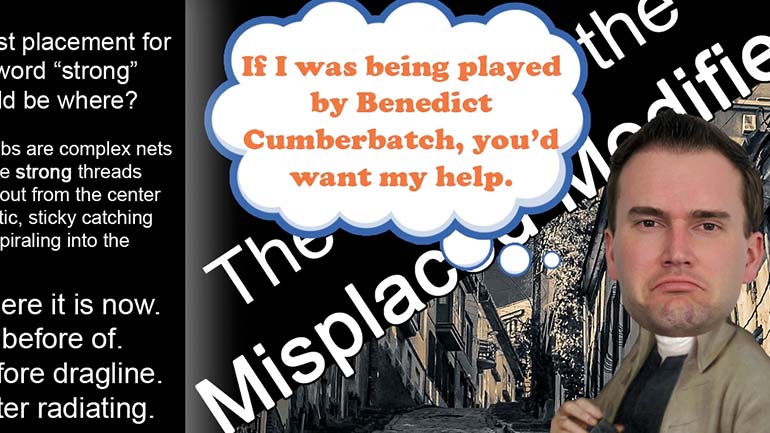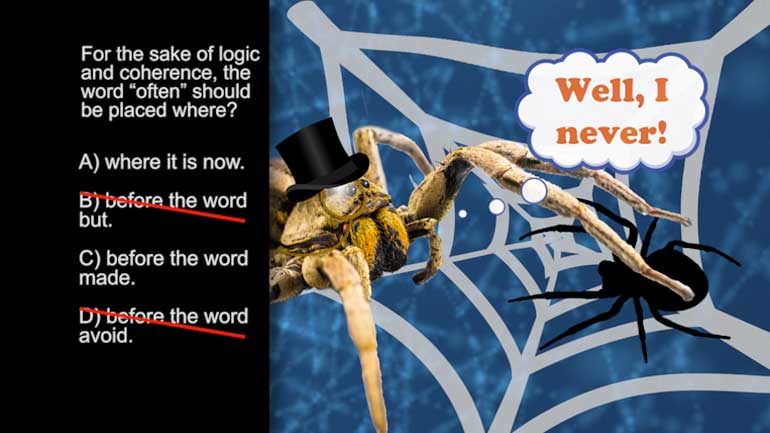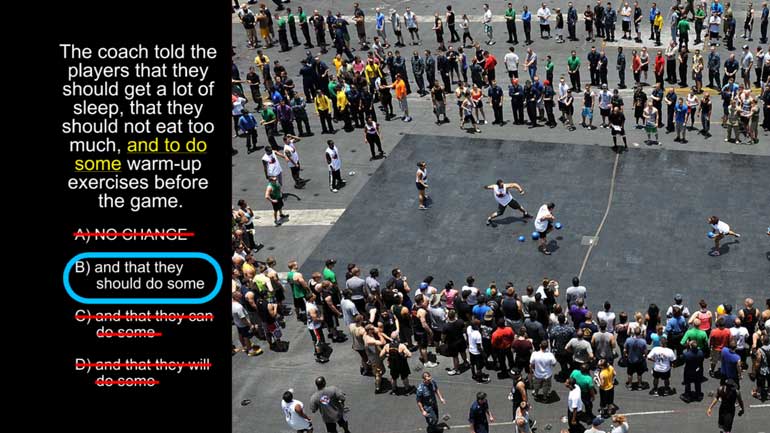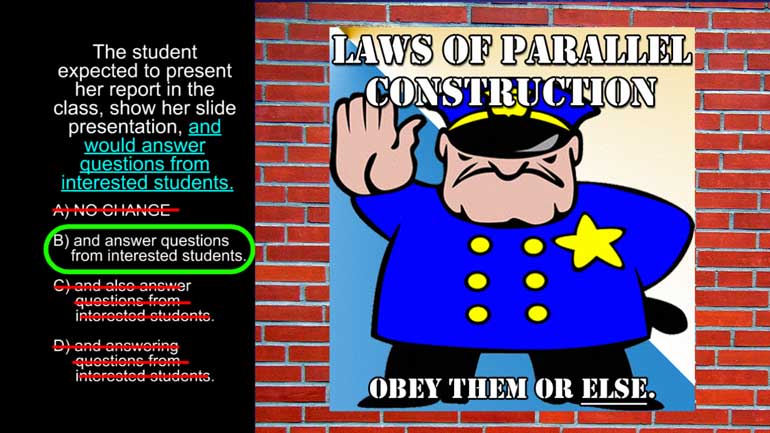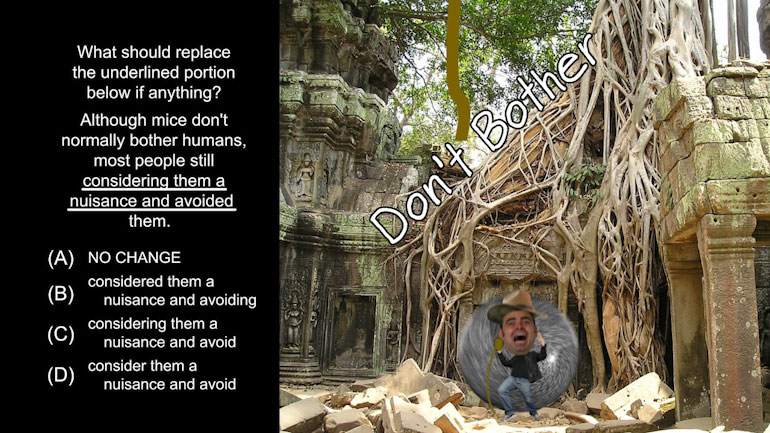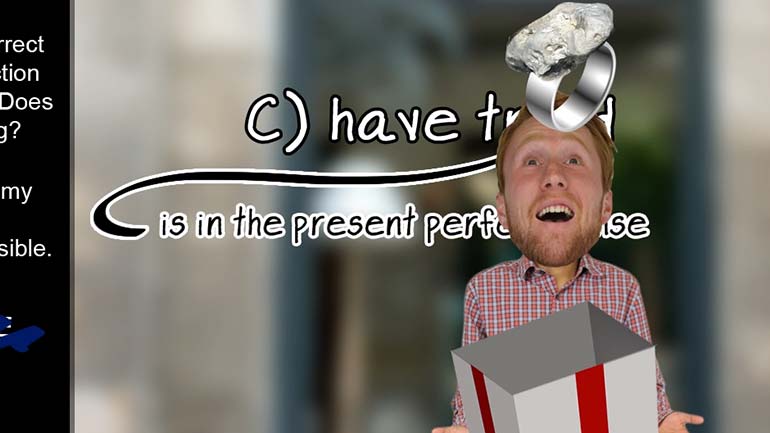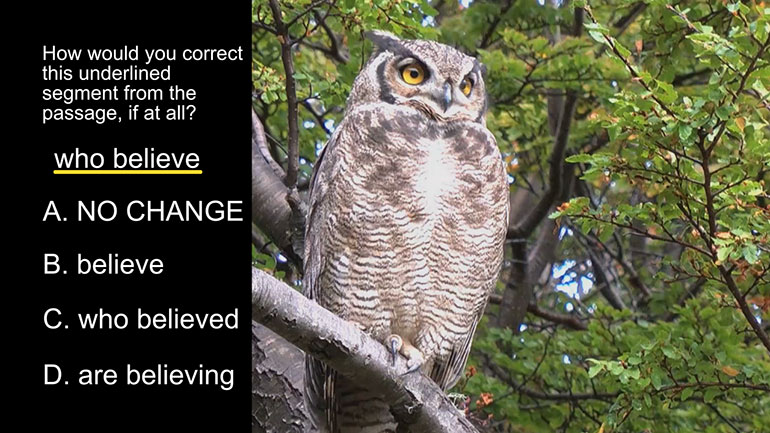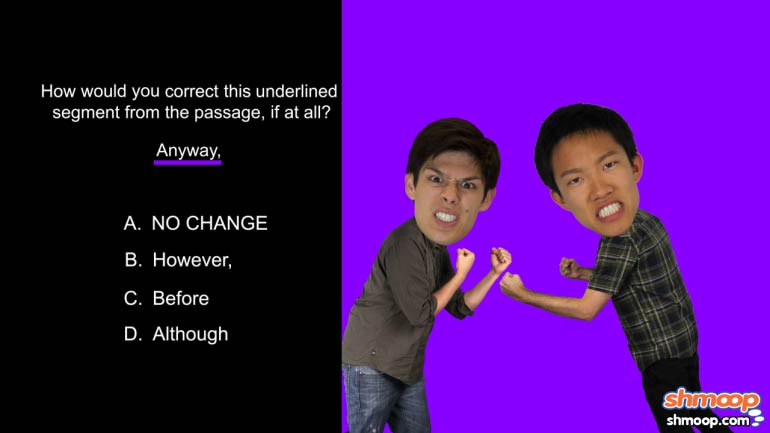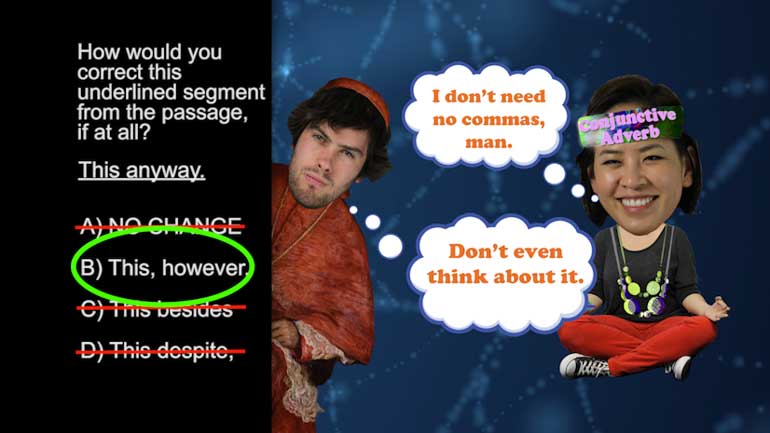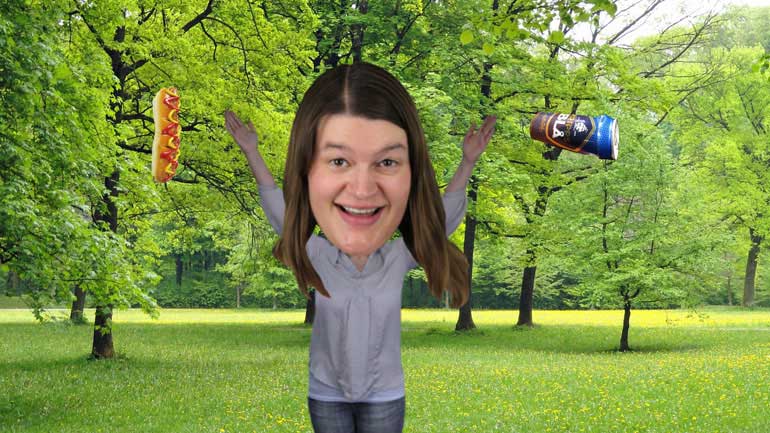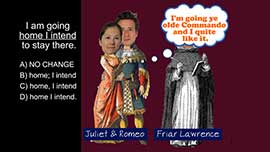ShmoopTube
Where Monty Python meets your 10th grade teacher.
Search Thousands of Shmoop Videos
Sentence Structure Videos 40 videos
Want even more deets on Run-on Sentences? Click here to review. Or take a look at our entire grammar section for all the goods.
Transitioning smoothly from one sentence to the next can be tough. With a little bit of our help, your teacher will be calling you Mr. or Ms. Suave...
ACT English: Sentence Structure Drill 1, Problem 1. Properly punctuating dependent clauses.
ACT English 4.4 Sentence Structure 250 Views
Share It!
Description:
ACT English: Sentence Structure Drill 4, Problem 4. How should this sentence best be completed according to parallel construction?
Transcript
- 00:03
Here's your Shmoop du jour, brought to you by slide presentations. We'll totally help
- 00:07
you through this problem, as soon as we've finished boring you with our recent trip to Mexico.
- 00:12
How should you change the underlined portion below, if at all?
- 00:15
The student expected to present her report in the class, show her slide presentation,
- 00:19
and would answer questions from interested students.
Full Transcript
- 00:29
The first two items begin with verbs in the present tense --"present" and "show"-- so
- 00:33
the unyielding laws of parallel construction dictate that the third item should begin with
- 00:37
a verb in the present tense as well.
- 00:39
The original sentence breaks the law by putting the third item in the future past tense by using "would."
- 00:44
The idea of future past tense makes our brains hurt a little bit, but it's actually simple
- 00:48
if we take a second to break it down.
- 00:50
It's when a verb is used to refer to the future from the perspective of some point in the past.
- 00:55
An example might be, "One day the tiny child would be a giant Sumo wrestler."
- 01:00
Whatever the case, this tense doesn't jibe with the simple present tense verbs of the
- 01:03
rest of the list, so we can take choice (A) out of the running.
- 01:06
Choice (D) tries to stick us with what seems to be a gerund, which is a word
- 01:10
derived from a verb that actually functions as a noun.
- 01:14
"Answering questions from interested students" is actually a gerund phase, and the whole
- 01:18
thing can act as a noun.
- 01:19
For example, we could say, "Answering questions from interested students was awful for Abigail."
- 01:25
See how the phrase functions as a noun might as the subject of the sentence?
- 01:28
In any case, this list doesn't have any room for gerunds or gerund phrases. We're looking
- 01:33
for answer choice with simple present tense verbs, and (D) doesn't fit the bill.
- 01:37
(C) does include the present tense verb "answer," which is exactly what we need. It still doesn't
- 01:41
make the cut, though, because it adds "also" into the mix.
- 01:45
"Also" is unnecessary here, and its presence might call down the wrath of the parallel
- 01:48
construction police.
- 01:50
It's best that we opt for choice (B), which is the exact same thing as (C), minus the
- 01:54
also.
- 01:55
Does anybody else ever wish that the laws of parallel construction would loosen up a bit?
Related Videos
ACT English: Punctuation Drill 2, Problem 2. Where should the semi-colon be placed?
ACT English: Punctuation Drill 3, Problem 1. How should this sentence be changed so that it is grammatically correct?
ACT English: Punctuation Drill 3, Problem 2. How should we properly hyphenate the words in this sentence?
ACT English: Punctuation Drill 3, Problem 4. Which choice best formats this list of items?
ACT English: Punctuation Drill 2, Problem 1. Which choice of punctuation best completes the sentence?


